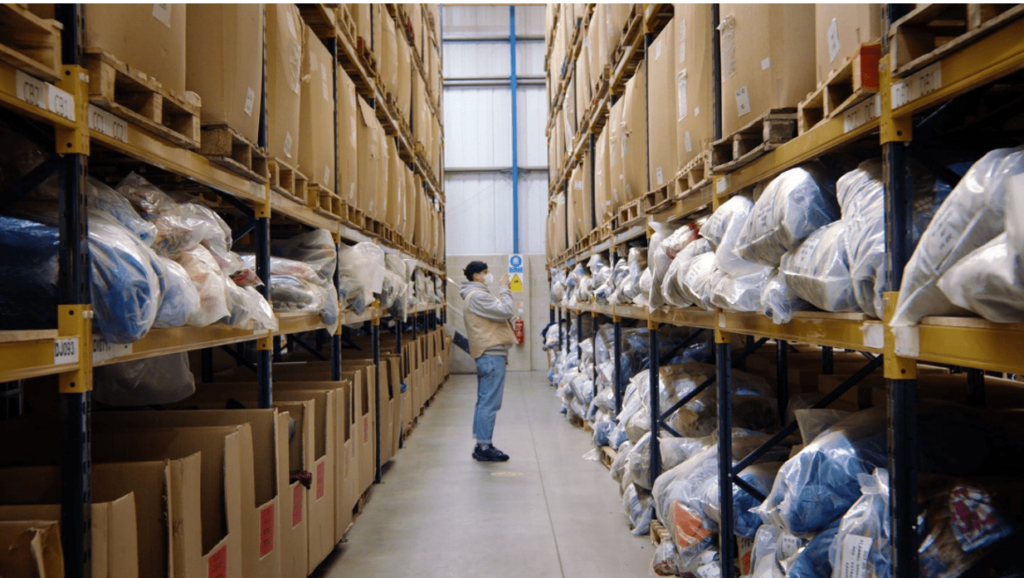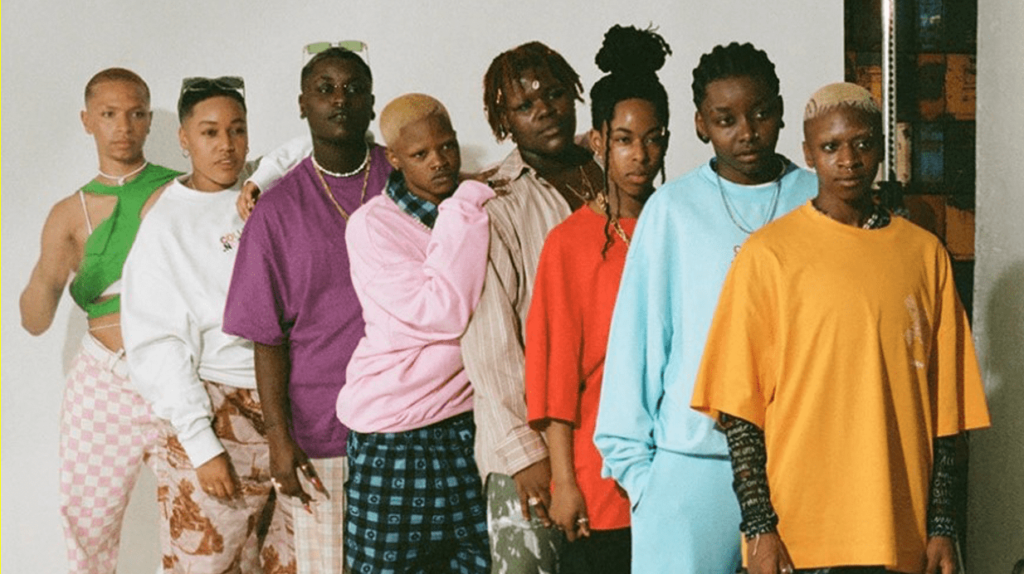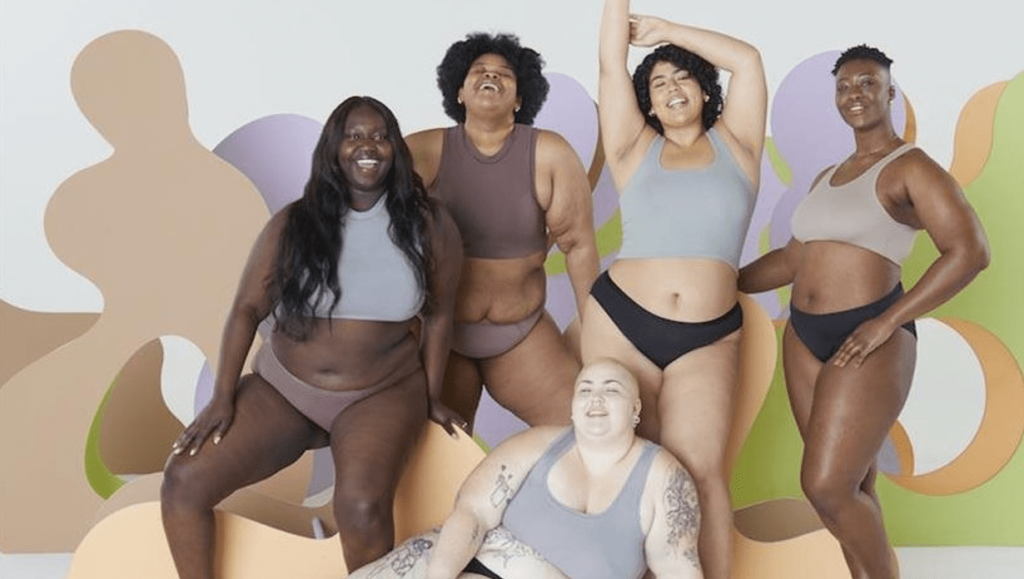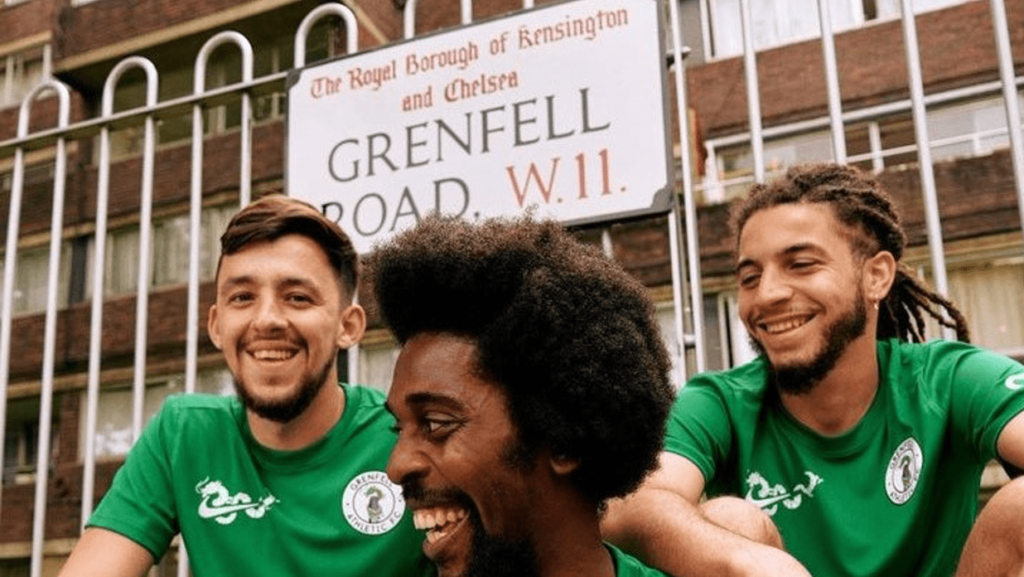Read more about HSBC’s Pride campaign and how the global organisation was able to remain authentic in a new age of media activism.
HSBC have been great allies of the LGBTQ+ community for years now, but in a new age of diverse and inclusive media activism, how could we help HSBC remain authentic and engaging as opposed to performative and tokenistic?
Today, we discuss our strategy and approach when working with multinational banking and finance giants, HSBC, on their 2020 Pride campaign.
Keeping diverse and inclusive media authentic
Our method was simple – to be as authentic as possible, by bringing real stories and emotions to the forefront of the brand’s most accessible touchpoint during a national lockdown – their social media channels.
The business goal for this brief was to engage and educate HSBC audiences on the concept of ‘passing’ and its effects on individuals as a means of publicising HSBC’s approach to diversity and inclusion. For those not aware, passing is a notion that describes passing off as someone on the exterior that doesn’t truly match with a person’s true internal identity, for example many gay individuals feel they need to ‘pass’ as straight to fit in or be safe, so they’ll perform in a way that is traditionally ‘masculine’.
We wanted it to be clear that HSBC stands with the LGBTQ+ community through all these experiences. Better yet, it advocates for the community and wants to help share these stories. The brand has always been incredibly open and transparent in their stance on diversity and inclusion, but at a time where the entire world was more uncertain than ever, we needed to take it one step deeper to really speak to the community and make the campaign contextually relevant to current times.
Contextual relevance is key to every campaign’s success
The impact of COVID-19 had forced the whole nation into a 2020 summer of lockdown between March and June. The impact of the virus was hugely widespread, however individuals from marginalised or disadvantaged groups such as the LGBTQ+ communities – who already experience poorer outcomes in healthcare – may have disproportionally been more affected by the current situation.
It was also important for us to consider the impact around intersectionality within the different LGBTQ+ communities. For example, being LGBTQ+ as well as belonging to other minority identities such as Disabled, Black and Asian just to name a few. These individuals had a greater likelihood of being affected by coronavirus in the UK because they were generally in need of greater support.
Due to the already existing instability of the support systems that LGBTQ+ individuals faced, they were more likely to be a) socially isolated and b) homeless. 24% of homeless people aged 16-24 are LGBTQ+, and 18% of LGBTQ+ people have been homeless at some point in their lives.
According to Age UK: “Research shows that (older) LGBTQ+ people are especially vulnerable to loneliness as they are more likely to be single, live alone, and have lower levels of contact with relatives.”
Further to this, LGBTQ+ communities sadly lack traditional and mainstream support networks. They are more likely to have what is called a chosen family – a selected group of close friends and members of the community that replace immediate family relations, often due to family rejection.
What’s worse, is that many young people will have found themselves having to self-isolate in a household with LGBTQ-phobic parents and family members. There is research to show that LGBTQ+ individuals are disproportionately more likely to have poor mental health and a 2018 study found that 52% of LGBTQ+ people had experienced depression in the year preceding the survey.
Sharing a narrative and making it accessible
When you’re surrounded by people who don’t understand you – in this case people who don’t accept your sexuality or people who you haven’t ‘come out’ to yet – the most common thing to do is to turn to online spaces. This was bound to be the case even more so during the national lockdown where physical interaction and social spaces in the real world were closed until further notice.
All these factors made up the foundations led us to create a powerful series of passing films, sparking a conversation through the sharing of personal narratives and showing solidarity in online spaces for LGBTQ+ people in the context of lockdown.
We took advantage of our extensive diversity media network and selected a range of queer influencers as well as real HSBC employees to tell their own personal story of passing. To inspire, engage and represent unheard voices within the community who were struggling at the time. This was HSBC’s way of letting them know, they weren’t alone and there was a virtual community they would always be a part of.
This enabled their followers and audiences, who had similarly experienced passing in their lives, to share their stories online too, creating a beautiful, sincere and authentic exchange of conversation. For HSBC, this awareness proved that there was solidarity online for those who needed it and cemented their allyship with the LGBTQ+ community even further.
Overall, the campaign exceeded our expectations from a stats and delivery perspective as well as engagement and positive dialogue across socials. There was much anecdotal feedback which suggested the campaign resonated with the LGBTQ+ community and beyond.
HSBC diverse and inclusive pride campaign details
We worked with influencers Jake Graf and Luke Jefferson Day; a transman and pan-sexual man respectively. We wanted each piece to be as authentic and intimate as possible, so although we provided editorial direction and oversaw the logistical process, both Jake and Luke chose which story they wanted to share and delivered their content in the medium they were most comfortable with.
INFLUENCER NAME:
Jake Graf
INFLUENCER Profile:
Jake Graf is an English Actor, Filmmaker and Transgender Rights Activist. He is a leading figure in the LGBTQ+ community and is widely known for his active support. Jake is a go-to person when looking for a positive LGBTQ+ role model and has been shining a light on Queer and Trans experiences to a wider, more mainstream audience. He has recently worked with River Island and VO5 and was extremely interested in telling his story about passing as a woman, then as a CIS man.
INFLUENCER NAME:
Luke Jefferson Day
INFLUENCER Profile:
Luke is GQ Style’s Editor and a known face both in the LGBTQ+ community and the fashion industry. Luke has shared personal stories on his Instagram feed on his experience as a gay man before and has more recently opened up about his pansexuality. After having to pass in the Gay community for years, Luke felt it was time to share his personal story and inspire others with his motto: ‘harness your uniqueness’. This remains one of his most liked and engaged with post to date.
An additional two videos were created by HSBC Global. They were shared and promoted across social media accounts within our wide network of LGBTQ+ influencers.
HSBC on the story of their colleague, Nathaniel:
“Our lives are full of places where we feel we can’t, or shouldn’t, express our authentic selves. Barber shops can be an example of where gay, bi and trans men feel they need to pass as straight. In a year where many of us can’t be as ‘out’ as we’d like to be, it’s as important as ever that our diverse identities are still seen, heard and celebrated.”
Watch Nathaniel’s story here:
HSBC on the story of their colleague, Florence:
“A lot of people in the LGBT+ community feel they need to ‘pass’ as straight. But at a time when we can’t come together as normal, we need visibility more than ever. So whether you’re coming out to colleagues, or sashaying in your living room, we support your journey and wish you a happy Pride being exactly who you are.”
Watch Florence’s story here:
Josh Chi who heads up Media & Strategy at OMG UNITE shares his personal thoughts on the #StopAsianHate movement and how we can help.
Josh Chi has occupied the role of Head of Media & Strategy at OMG UNITE for over 7 years now, but the time he has been an advocate for racial equality spans back further.
He says: “As an East Asian from Taiwan who has been living in the UK for more than 10 years, there are many stories from fellow Asians on the aggressions that they have faced. The situation in the UK may be different from the US, and we know people from other cultural and religious backgrounds are often facing similar or worse aggressions, even in a very multicultural London but these are all something to be addressed.”
“Those who know me will probably know that I am someone who doesn’t always express my view loudly, however this is a time when I do feel like my background might help bring a perspective to yet another ongoing issue – and hopefully make a difference.”
“In a recent gal-dem article, Siam Hatzaw summarised Anti-Asian racism as its own particular brand of bigotry. The situation has become even worse since Covid-19 with Asians being scapegoated for the pandemic, especially with narratives like ‘Kung Flu’ or ‘China virus’ – the latter coming from the former US President Donald Trump.”
Police data has indicated a 300% increase in hate crime reports from East and South East Asians in the first quarter of 2020 and that doesn’t even include the many microaggressions that some people face on a daily basis.
One of Chi’s roles at OMG UNITE includes dissecting client briefs to advise on topics relating to ethnicity, religion, gender, LGBTQ+, disability and many other intersections of demographic groups. He has worked on many social change and communication projects led by charities and brands including the Government, to address discrimination and inequality.
This work-life overlap has helped “make me more aware of the issue that we are facing” says Josh.
As an organisation that not only values but celebrates differences within the workforce, we collaborated with Josh Chi to see how our industry can help #StopAsianHate and how we can push further awareness.
How, as media industry leaders, can we help #StopAsianHate?
The most important thing anyone can do, regardless of industry category, is raise awareness. There are still people who are sadly ignorant to the fact that this type of racial inequality exists.
It’s been said before, but we’ll say it again – it is not enough to not be racist, we must be anti-racist. And for that to happen, we must actively demonstrate our support for those most vulnerable when it comes to any kind of discrimination, be it race, religion, sexuality or so on.
Josh Chi says: “For people in our industry who work in creative and comms, there are more way for us to facilitate long term and positive change. These are relevant, not just for stopping Asian hate, but for stopping hate in general.”
He continues to outline 3 things all workplaces can begin to implement with reference to the media and advertising industry.
1. Celebrate difference in your team
By now we would really hope that every workplace has a D&I (diversity and inclusion) department, team or specialist. If you work at a place that doesn’t, it may be time to suggest one.
From those of us who thrive off diversity in the workplace, we promise it’s truly one of the best things you can give your organisation. By ensuring diversity in your team, you can ensure a wide range of differing perspectives.
Not only will your team learn and grow as individuals, but in the media and advertising industry, you can use these perspectives and lived experiences as cultural lenses for client briefs. This leads nicely onto point two.
2. Challenge stereotypes in your work
Josh Chi says: “The creative work that our industry produces can set the tone for society”. And he’s absolutely right. The advertising world plays a much bigger role than selling product to a consumer – it sets boundaries on perception and suggests what’s acceptable and what’s not. Moreover, it can either make you feel seen and heard, or completely invisible.
That’s why it’s so important to get it right. That’s why it’s so important for media to go live with inclusion at the heart of it. That’s why we believe in what we do at OMG UNITE.
Josh adds: “We can help influence what is cool and what is not. Ensuring positive representation and challenging negative stereotypes in our creative is a good start. It helps normalise differences and can even help drive social cohesion.”
“To understand how this might work, try to imagine how Henry Golding may have changed the dating life of some East Asian men by being the lead character in Hollywood and British love stories, like Last Christmas or Monsoon.”
To reiterate Chi’s point, we need to see people like us in adverts, on billboards, on our TV screens for us to truly feel a sense of belonging rather than feeling like the ‘other’ box you tick on a list at the doctors.
But even then, it’s not enough. We need to see people like us portrayed respectively and not stereotypically. As an outlet that so many different demographic groups encounter, the media and advertising industry must do more to ensure societies such as the East Asian community feel empowered and inspired whenever encountering a piece of creative. This is where those in-house cultural lenses come back into play.
Side note: how great was it to see an entire Asian cast take over the world in mainstream media spaces? Read our case study on how we helped Warner Brothers engage with East Asian audiences in the UK to drive more cinema sales for Crazy Rich Asians.
3. Show empathy and support
There are a couple of ways you can do this within your organisation or agency to ensure each member of your team feels respected at work.
The first is simply knowing how to support your colleagues, especially those who may be less outspoken about the issues they may be facing. Reinforce a ‘no bullying, no racism’ policy and that includes any racist humour or ‘ethnic banter’.
The second is speaking up for those who feel they can’t. If you witness racism or bullying in the workplace – anything from verbal micro aggressions to hostile mistreatment – can you step in and express that what was said or done is completely unacceptable? Alternatively, ask the person who has just experienced aggression 3 simple words: “are you okay?”
The third is to ensure there is diversity in your leadership team so that individuals feel comfortable reaching out and asking for help or support. This interlaces with point 1, and not only celebrating diversity within your organisation but helping develop and grow that diverse talent towards leadership roles.
It is often always the case that it is easier to open up and speak to someone who we feel we can identify with and can empathise with us. And in a similar vein, this links back to point 2 of seeing our cultures and races portrayed within mainstream media to feel and be more visible.
We’d like to end this piece in Josh’s words:
“In order to get everyone to understand the issue, we need more people (and not just Asians) talking about it. A quick Google search will show that there are some celebrities talking about it but more of the Asian ones.
Kudos to will.i.am for urging viewers to stop Asian hate in The Voice UK, but we need more from all backgrounds to do the same as well. One step at a time and one issue at a time, we can all learn to be better human beings.
And for those who are considering sharing their thoughts to help drive awareness. Never think that your voice may be just another similar article or social post. To stop hate, we need as many people as possible to support in their own ways. Even if you don’t think you can change the world, you will change someone’s world by doing the right things.”
Once a month, the team at OMG UNITE come together to talk all things, inspirational, innovative and inclusive. We call this our ‘Creative Chinwag’, hosted by yours truly. Within the session, members of the team present their favourite campaigns or partnerships that promote diversity, inclusion and belonging.
In no particular order, here are 7 of our favourite diversity and inclusion campaigns that we think have really hit the mark.
1. Havas London X Vanish and British Fashion Council

This campaign brought in designers from diverse backgrounds to share their thoughts on climate change and landfill sights. Each of the designers are taking steps to create pieces that are either recycled or created using sustainable material.
This three-part series, created by Havas London and directed by Richard Bullock at Hungry Man, aims to inspire consumers into adopting environmentally conscious behaviours in the buying, wearing, caring, and disposing of clothes.
2. Facebook Portal 2021
Facebook’s new portal device has encouraged people to reconnect through video call and rediscovering inclusive design. This advert was brought attention to the team as it is completely silent yet very effective.
A simple conversation between two sisters in BSL sign language allows a space for people who are hearing impaired to share the moment, it also encourages other tv campaigns to do the same. There is still a lot of work that needs to be done with raising awareness for disabled communities in our content and products.
3. Lush X Growing peace through almond oil
Since 1967, Palestine’s water supplies have been controlled by Israel. With limited water supplies, many almond farmers struggle to sustain their livelihoods. Canaan, a project in Palestine, is finding solutions: Growing peace through almond oil.
This has enabled Palestinian farmers to earn a sustainable livelihood and the communities caught in conflict to connect with the outside world. Lush has collaborated with Canaan to help ethically source the almond oil and create economic freedom and land gain to Palestinian farmers. The impact of the campaign has motivated people to think about how brands are making life-changing decisions to help ethically produce their products. Lush’s video and social media campaign shows that they are not afraid of being transparent and both highlights and encourages the need for digital changemaking.
4. AZ Mag x Pinterest x Pride
AZ Mag and Pinterest collaborated for a digital social media campaign that highlighted QTBIPOC (Queer, Trans, Black, Indigenous People of Colour) in the UK and their work. This was centred around Pride but is an ode to supporting LGBTQ+ people of colour in the community generally.
The campaign was deemed successful on social media and digital platforms and highlighted the importance of bringing in perspectives from black LGBTQ+ communities.
5. Asos x Exist Loudly

ASOS x Exist Loudly COLLUSION (available exclusively on ASOS) has teamed up with Black LGBTQ+ youth organisation, Exist Loudly to launch a time-limited clothing collection. Featuring iconic COLLUSION staples such as oversized t-shirts updated in Progress Pride flag colours, the collection shows support for underrepresented members of the LGBTQ+ community.
ASOS will be donating £38,000 to Exist Loudly to help the organisation deliver a 12-week masterclass programme led by established advocates and creatives, to foster queer Black communities and empower young creative talent.
6. Thinx Plus Size Campaign

Sustainable period underwear brand, Thinx, is asking for self-portraits to mark its launch of extended plus-sizes across all product styles. The campaign that was created in-house includes images by photographer Lydia Hudgens of plus-size models photographing themselves.
The goal was to allow plus-size people to feel in control of their bodies, stated Crystal Zerrenner, Chief Growth Officer at Thinx. The campaign ran on Thinx’s website and social media channels. In addition to the photos, Thinx will also run user generated content and behind-the-scenes footage of the shoot on TikTok.
7. Grenfell United FC X Kitlocker

Grenfell United was formed to look after each member of the community, support the wider community and campaign for justice and change. Using something like Football – a sport that takes pride in belonging to a community – was an excellent choice for this campaign’s collaboration and helped with wider awareness of the cause.
Since the formation, footballers from Chelsea FC and other clubs have worked with the team to help start the brand’s kit and exposure. They are now sponsored by Cadbury’s. Their posters and digital media presence are seen across London, activating a story for millions to see.
Closing thoughts
There you have it – 7 fantastic examples of how brands can practise D&I awareness authentically. Whether that’s through decisive brand collaboration, campaigning for injustices in minority communities or simply providing a seat at your table for creatives and professionals from diverse backgrounds, you can apply the same principles and adapt accordingly.
To say that creating inclusive and diverse campaigns are ‘challenging’ in today’s world, is a mere dismissal of bringing a global majority of voices to the table. This article demonstrates that there are plenty of opportunities to work innovative ideas alongside a bigger purpose. Whether the content is fighting for racial justice, LGBTQ+ voices or global warming, you can make a change. But remember, for diverse and inclusive marketing to really communicate with your audiences, your content and campaigns should not be muddled with a tokenistic approach – ensure you are truly engaging with your communities and providing opportunities that make a difference.